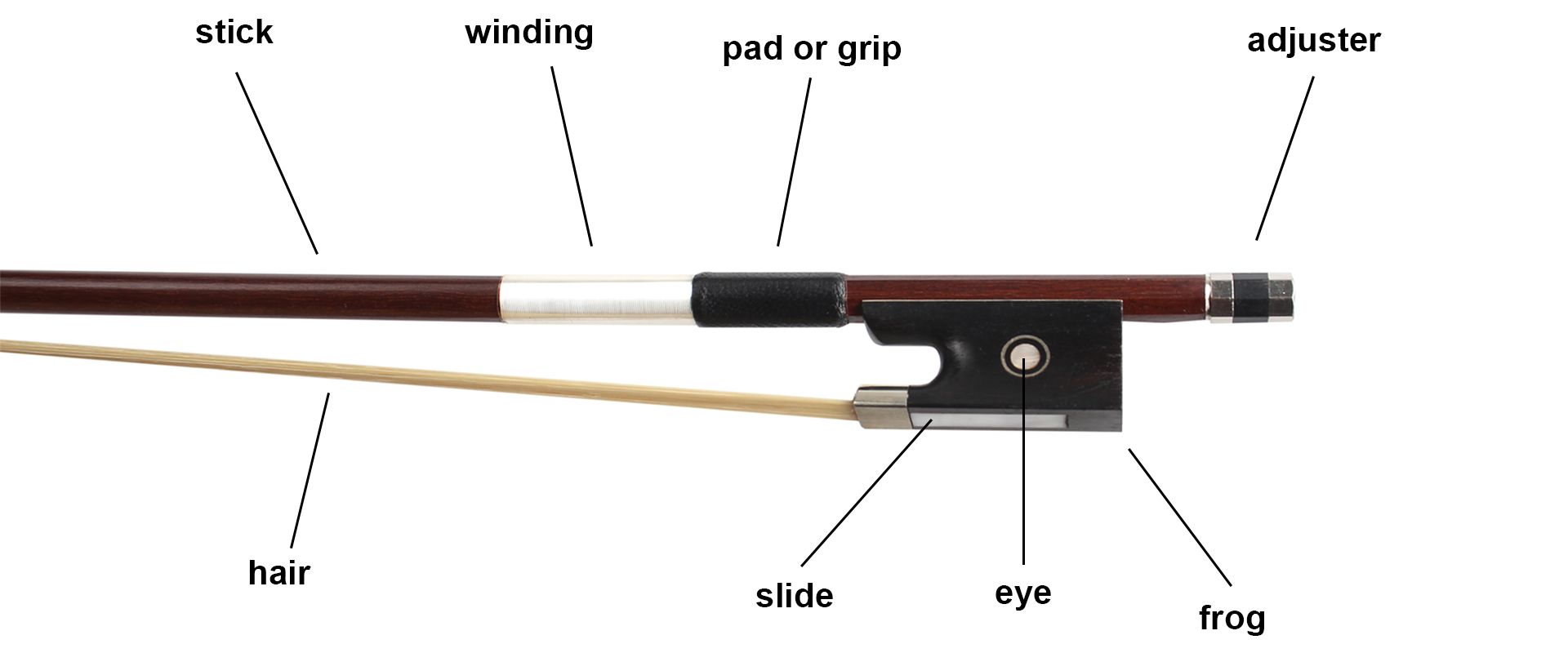Understanding the Parts of a Bow

If you are new to stringed instruments then you may not know the names of all the parts on a bow. You might be surprised to learn that your bow has a frog, an eye and some hair! Here we will explain the parts and their names so you can get to know them and then understand more when you are choosing a new bow.
-
Stick - that's the long bit that looks like, well, a stick! Often made of Brazilwood, Pernambuco (wood) or Carbon. Each has its own characteristics but all are good materials for a bow.
-
Winding - this is often thin wire or another material wound around the stick to provide a surface to help the fingers from slipping. Nickel-silver wire is very popular and looks good.
-
Pad or grip - a small pad of material, often leather, around the stick to provide a comfortable non-slip place for the fingers.
-
Adjuster - this is turned to either tension the hair before playing or slacken it when you are finished. It makes the frog slide up or down the stick. Your teacher will show you how much tension to put on the hair.
-
Frog - bet you didn't know you got a frog with your bow! This frog holds the hair and it can slide along the stick when you turn the adjuster.
-
Eye - this is in the frog to make it look nice! It doesn't do anything except make your bow look good. Some eyes have special names like "Parisian Eye" - don't worry about this yet.
-
Slide - this is a small plate under the frog and like the eye is there to make your bow look attractive.
-
Hair - well, it's the hair, the part you will pull and push over the string to make beautiful music. Often it is the hair from a horse's tail.
-
Tip - OK, this isn't in the picture. It is the other end of the bow, the pointy bit. Be careful you don't poke anyone's eye out with it when playing!
So, we hope that you know what all the parts are called and what they are for now. A good bow will have a stick with some flexibility as it is this that provides the player with the ability to play loud or soft, with an attack when required and to generally create the sound they want. The hair is very important since it this that is actually making the string vibrate. Very cheap bows use artificial hair which is not good. The frog and the adjuster are, essentially, mechanical components but should be nicely finished and work smoothly.
Some professional violinists will tell you that the bow is as or even more important than the violin (or whatever you play).
Have fun playing music!
